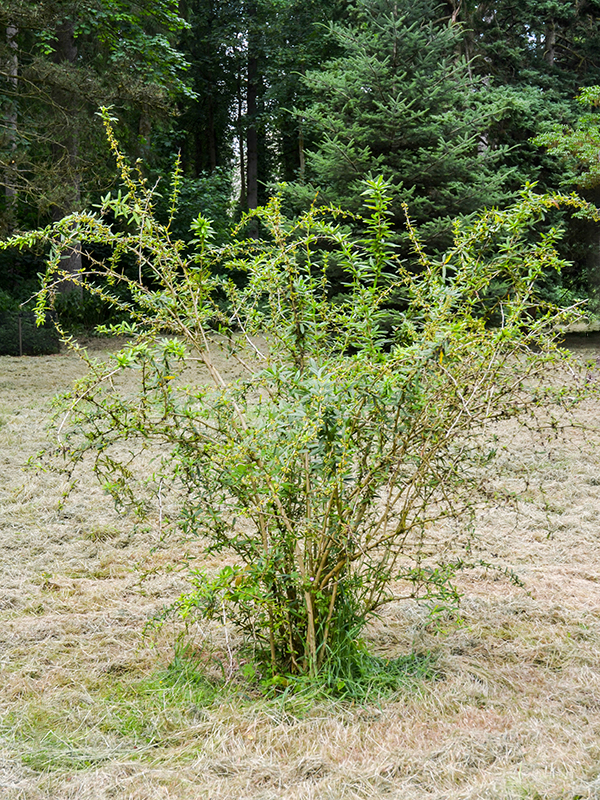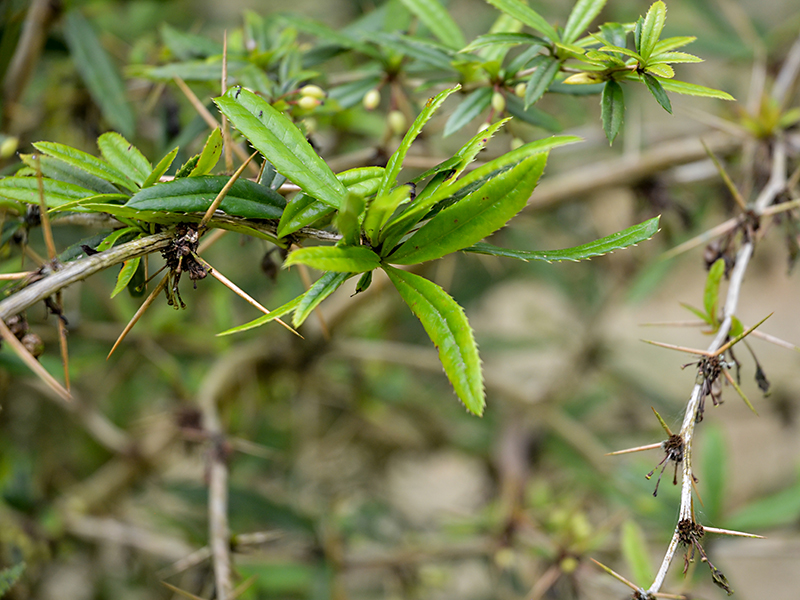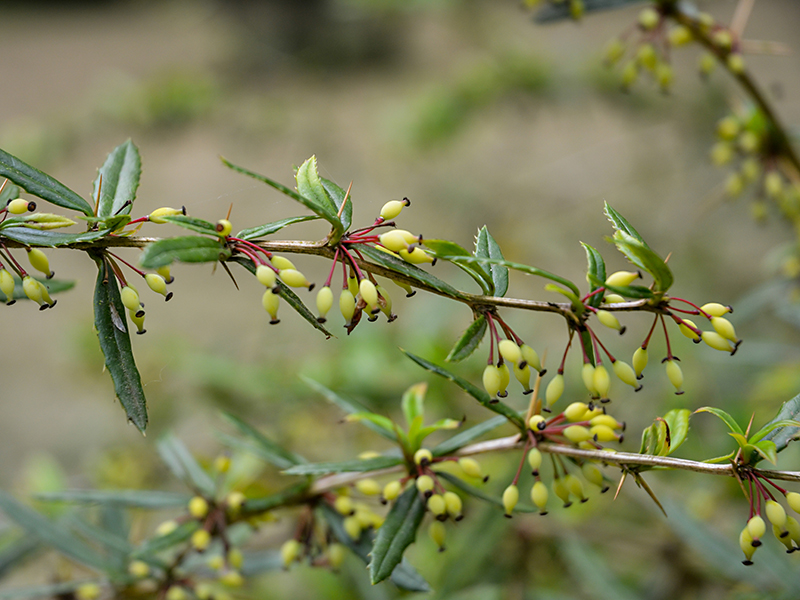
Woody > Berberis > Berberis soulieana > Berberis soulieana
Berberis soulieana
Pink Fruited Barberry
Origin: China.
| Family |
| Berberidaceae |
| Genus |
| Berberis |
| Species |
| soulieana |
| Category |
| Woody |
| Type |
| Shrub (evergreen) |
| USDA Hardiness Zone |
| 6 |
| Canadian Hardiness Zone |
| 5b |
| RHS Hardiness Zone |
| H7 |
| Temperature (°C) |
| -23 |
| Temperature (°F) |
| -10 |
| Height |
| 1 - 2 m |
Photographs
Description and Growing Information
Flowering Period
| Landscape |
| Works well in gardens and as borders and groundcover. |
| Cultivation |
| Will thrive in any soil type that is not waterlogged, and should be grown in full sun. |
| Growth |
| Slow |
| Pests |
| The bacteria Pseudomonas berberidis may cause black spots on leaves, and the berberry aphid (Liosomaphis berberidis) may also be a problem. |
| Bark/Stem Description |
| Stems are grey and grooved, with rigid spines to 3 cm. |
| Leaf Description |
| Leaves are bright green above, paler beneath, rigid, growing to 8 x 1 cm. |
| Flower Description |
| Flowers show up to 10 per cluster. |
| Fruit Description |
| Fruit is ovoid with reduced style, mauve glaucous-blue. |
| Notable Specimens |
| Westonbirt, The National Arboretum, Tetbury, Gloucestershire, England. |
| Propagation |
| Propagate by seed (although offspring may be variable), or by cuttings. |
| Ethnobotanical Uses (Disclaimer) |
| The fruit can be eaten raw or cooked. The berberine in the fruit is claimed to have anti-tumorous properties. |


